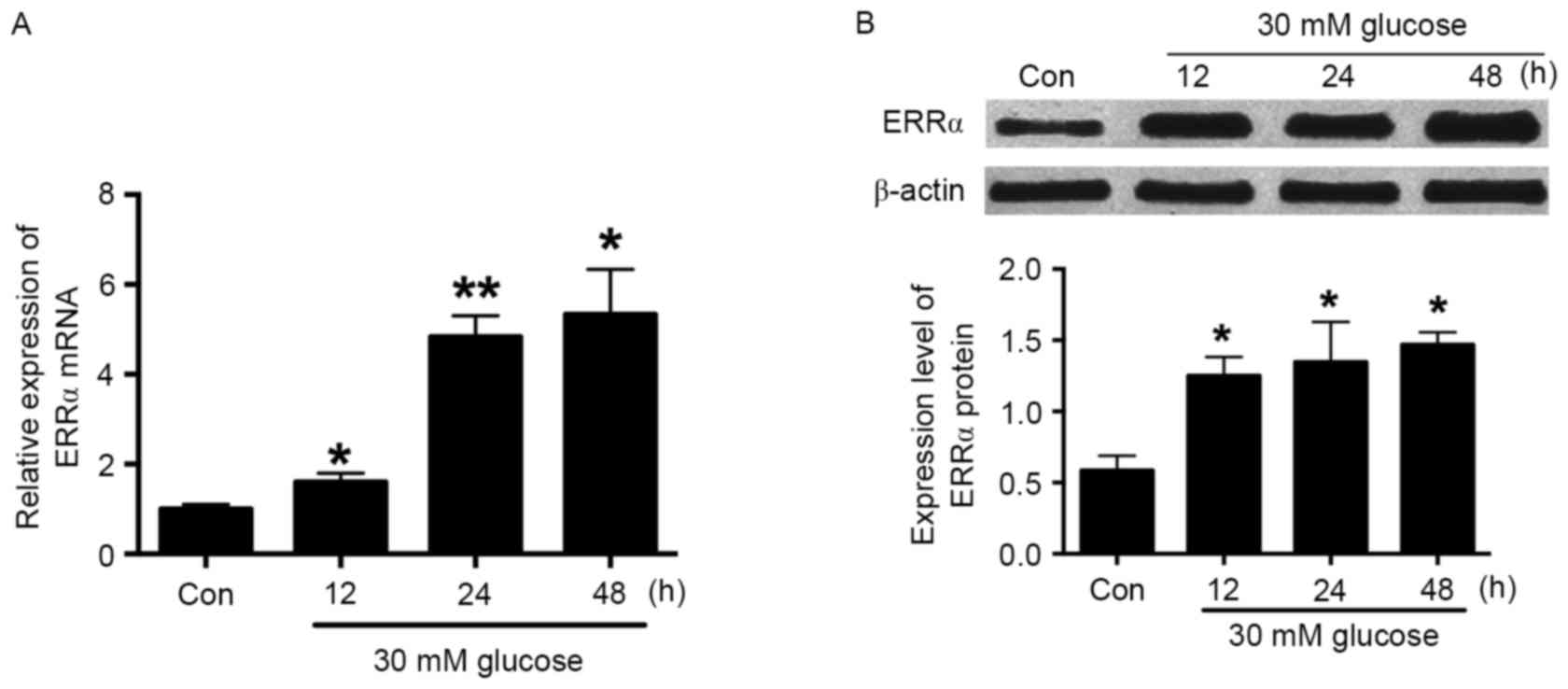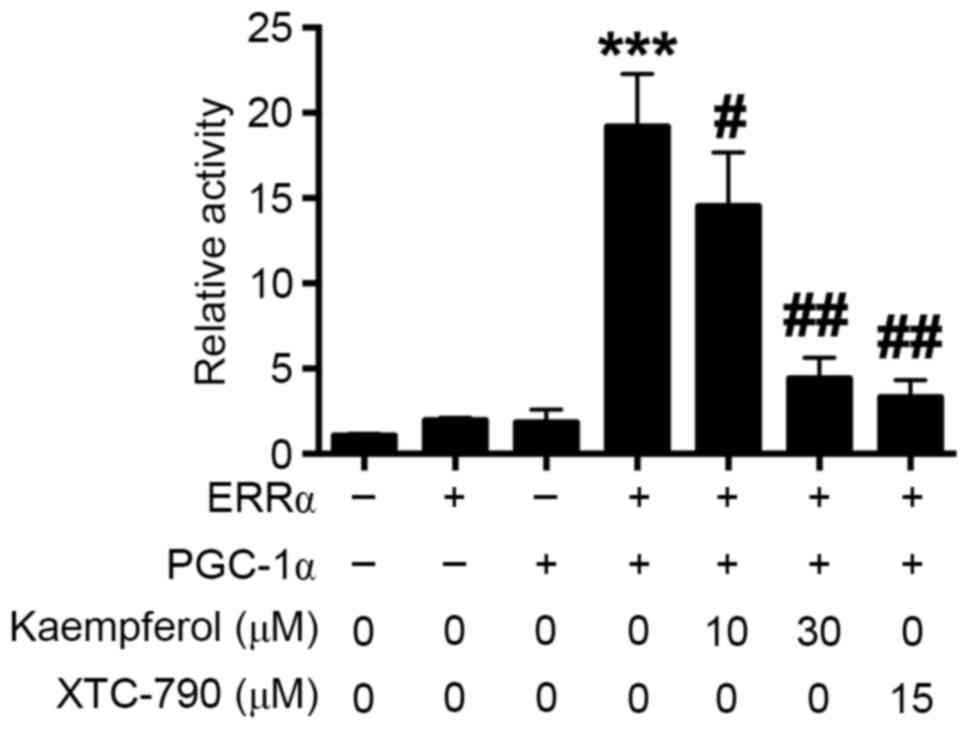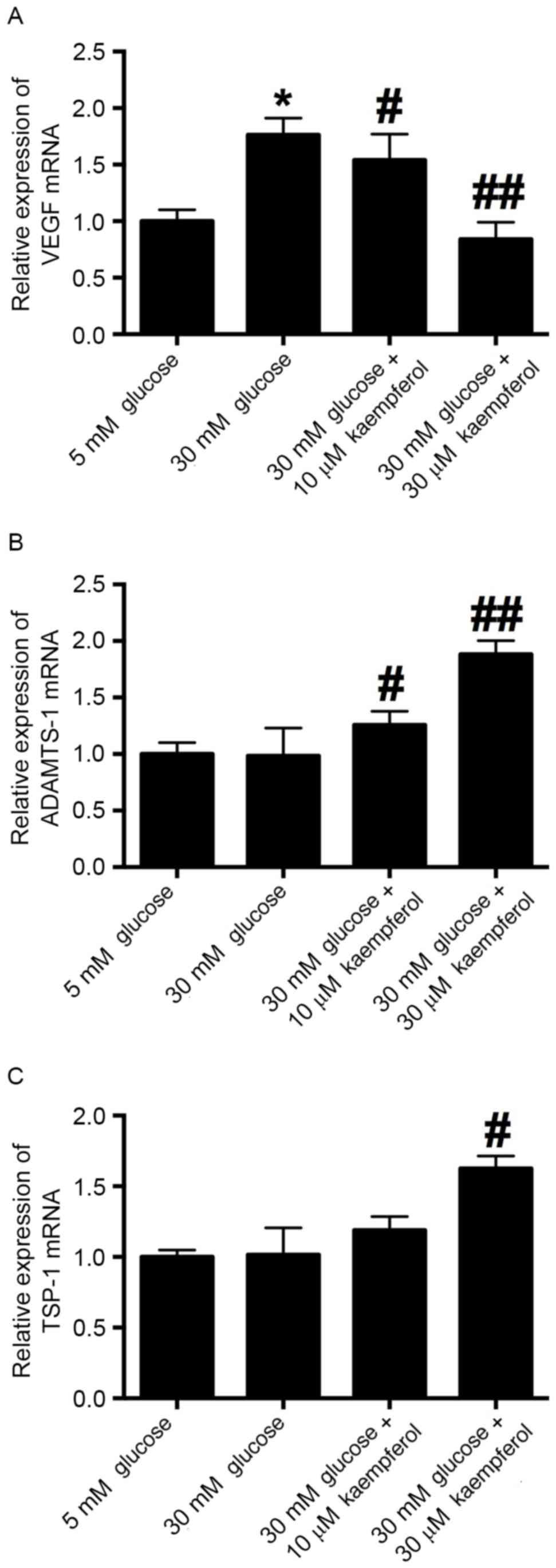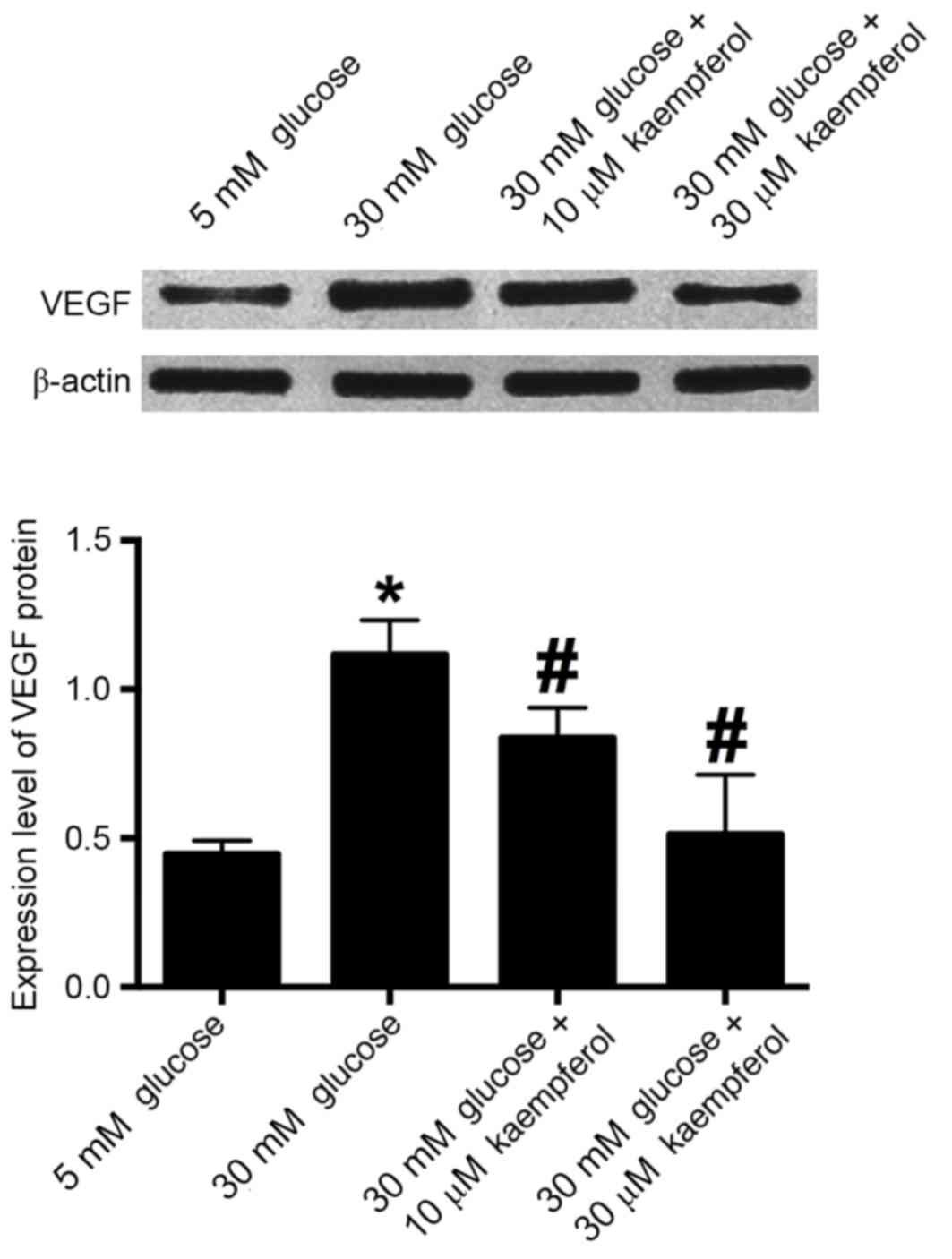|
1
|
Yu DY, Cringle SJ, Su EN, Yu PK, Jerums G
and Cooper ME: Pathogenesis and intervention strategies in diabetic
retinopathy. Clin Exp Ophthalmol. 29:164–166. 2001. View Article : Google Scholar : PubMed/NCBI
|
|
2
|
Hendrick AM, Gibson MV and Kulshreshtha A:
Diabetic Retinopathy. Prim Care. 42:451–464. 2015. View Article : Google Scholar : PubMed/NCBI
|
|
3
|
Wan TT, Li XF, Sun YM, Li YB and Su Y:
Recent advances in understanding the biochemical and molecular
mechanism of diabetic retinopathy. Biomed Pharmacother. 74:145–147.
2015. View Article : Google Scholar : PubMed/NCBI
|
|
4
|
Osaadon P, Fagan XJ, Lifshitz T and Levy
J: A review of anti-VEGF agents for proliferative diabetic
retinopathy. Eye (Lond). 28:510–520. 2014. View Article : Google Scholar : PubMed/NCBI
|
|
5
|
Yoo SY and Kwon SM: Angiogenesis and its
therapeutic opportunities. Mediators Inflamm. 2013:1271702013.
View Article : Google Scholar : PubMed/NCBI
|
|
6
|
Distler JH, Hirth A, Kurowska-Stolarska M,
Gay RE, Gay S and Distler O: Angiogenic and angiostatic factors in
the molecular control of angiogenesis. Q J Nucl Med. 47:149–161.
2003.PubMed/NCBI
|
|
7
|
Sorenson CM, Wang S, Gendron R, Paradis H
and Sheibani N: Thrombospondin-1 deficiency exacerbates the
pathogenesis of diabetic retinopathy. J Diabetes Metab. Suppl
12:2013.PubMed/NCBI
|
|
8
|
Basile DP, Fredrich K, Chelladurai B,
Leonard EC and Parrish AR: Renal ischemia reperfusion inhibits VEGF
expression and induces ADAMTS-1, a novel VEGF inhibitor. Am J
Physiol Renal Physiol. 294:F928–F936. 2008. View Article : Google Scholar : PubMed/NCBI
|
|
9
|
Ranhotra HS: The estrogen-related receptor
alpha: The oldest, yet an energetic orphan with robust biological
functions. J Recept Signal Transduct Res. 30:193–205. 2010.
View Article : Google Scholar : PubMed/NCBI
|
|
10
|
Zhang K, Lu J, Mori T, Smith-Powell L,
Synold TW, Chen S and Wen W: Baicalin increases VEGF expression and
angiogenesis by activating the ERR{alpha}/PGC-1{alpha} pathway.
Cardiovasc Res. 89:426–435. 2011. View Article : Google Scholar : PubMed/NCBI
|
|
11
|
Olszewska MA: New validated
high-performance liquid chromatographic method for simultaneous
analysis of ten flavonoid aglycones in plant extracts using a C18
fused-core column and acetonitrile-tetrahydrofuran gradient. J Sep
Sci. 35:2174–2183. 2012. View Article : Google Scholar : PubMed/NCBI
|
|
12
|
Chen AY and Chen YC: A review of the
dietary flavonoid, kaempferol on human health and cancer
chemoprevention. Food Chem. 138:2099–2107. 2013. View Article : Google Scholar : PubMed/NCBI
|
|
13
|
Kim SH and Choi KC: Anti-cancer effect and
underlying mechanism (s) of kaempferol, a phytoestrogen, on the
regulation of apoptosis in diverse cancer cell models. Toxicol Res.
29:229–234. 2013. View Article : Google Scholar : PubMed/NCBI
|
|
14
|
Wang J, Fang F, Huang Z, Wang Y and Wong
C: Kaempferol is an estrogen-related receptor alpha and gamma
inverse agonist. FEBS Lett. 583:643–647. 2009. View Article : Google Scholar : PubMed/NCBI
|
|
15
|
Luo H, Rankin GO, Juliano N, Jiang BH and
Chen YC: Kaempferol inhibits VEGF expression and in vitro
angiogenesis through a novel ERK-NFκB-cMyc-p21 pathway. Food Chem.
130:321–328. 2012. View Article : Google Scholar : PubMed/NCBI
|
|
16
|
Livak KJ and Schmittgen TD: Analysis of
relative gene expression data using real-time quantitative PCR and
the 2(-Delta Delta C(T)) method. Methods. 25:402–408. 2001.
View Article : Google Scholar : PubMed/NCBI
|
|
17
|
Dagher Z, Park YS, Asnaghi V, Hoehn T,
Gerhardinger C and Lorenzi M: Studies of rat and human retinas
predict a role for the polyol pathway in human diabetic
retinopathy. Diabetes. 53:2404–2411. 2004. View Article : Google Scholar : PubMed/NCBI
|
|
18
|
Yuan L, Hu J, Luo Y, Liu Q, Li T, Parish
CR, Freeman C, Zhu X, Ma W, Hu X, et al: Upregulation of heparanase
in high-glucose-treated endothelial cells promotes endothelial cell
migration and proliferation and correlates with Akt and
extracellular-signal-regulated kinase phosphorylation. Mol Vis.
18:1684–1695. 2012.PubMed/NCBI
|
|
19
|
Chen X, Li J, Li M, Zeng M, Li T, Xiao W,
Li J, Wu Q, Ke X, Luo D, et al: KH902 suppresses high
glucose-induced migration and sprouting of human retinal
endothelial cells by blocking VEGF and PIGF. Diabetes Obes Metab.
15:224–233. 2013. View Article : Google Scholar : PubMed/NCBI
|
|
20
|
Chen Z, Liu G, Xiao Y and Lu P:
Adrenomedullin22-52 suppresses high-glucose-induced migration,
proliferation, and tube formation of human retinal endothelial
cells. Mol Vis. 20:259–269. 2014.PubMed/NCBI
|
|
21
|
Hayashi JN, Ito H, Kanayasu T, Asuwa N,
Morita I, Ishii T and Murota S: Effects of glucose on migration,
proliferation and tube formation by vascular endothelial cells.
Virchows Arch B Cell Pathol Incl Mol Pathol. 60:245–252. 1991.
View Article : Google Scholar : PubMed/NCBI
|
|
22
|
Premanand C, Rema M, Sameer MZ, Sujatha M
and Balasubramanyam M: Effect of curcumin on proliferation of human
retinal endothelial cells under in vitro conditions. Invest
Ophthalmol Vis Sci. 47:2179–2184. 2006. View Article : Google Scholar : PubMed/NCBI
|
|
23
|
Zou C, Yu S, Xu Z, Wu D, Ng CF, Yao X, Yew
DT, Vanacker JM and Chan FL: ERRalpha augments HIF-1 signalling by
directly interacting with HIF-1α in normoxic and hypoxic prostate
cancer cells. J Pathol. 233:61–73. 2014. View Article : Google Scholar : PubMed/NCBI
|
|
24
|
Arany Z, Foo SY, Ma Y, Ruas JL,
Bommi-Reddy A, Girnun G, Cooper M, Laznik D, Chinsomboon J,
Rangwala SM, et al: HIF-independent regulation of VEGF and
angiogenesis by the transcriptional coactivator PGC-1alpha. Nature.
451:1008–1012. 2008. View Article : Google Scholar : PubMed/NCBI
|
|
25
|
Cao D, Zhou H, Zhao J, Jin L, Yu W, Yan H,
Hu Y and Guo T: PGC-1α integrates glucose metabolism and
angiogenesis in multiple myeloma cells by regulating VEGF and
GLUT-4. Oncol Rep. 31:1205–1210. 2014. View Article : Google Scholar : PubMed/NCBI
|
|
26
|
Liang F, Han Y, Gao H, Xin S, Chen S, Wang
N, Qin W, Zhong H, Lin S, Yao X and Li S: Kaempferol identified by
zebrafish assay and fine fractionations strategy from dysosma
versipellis inhibits angiogenesis through VEGF and FGF pathways.
Sci Rep. 5:144682015. View Article : Google Scholar : PubMed/NCBI
|
|
27
|
Betts-Obregon BS, Vellanki S, Buikema J,
Tsin AT and Wright K: Effect of glucose on retinal endothelial cell
viability and VEGF secretion. HSOA J Cell Biol Cell Metabol. 3:pii:
008. 2016.PubMed/NCBI
|
|
28
|
DiPietro LA, Nebgen DR and Polverini PJ:
Downregulation of endothelial cell thrombospondin 1 enhances in
vitro angiogenesis. J Vasc Res. 31:178–185. 1994. View Article : Google Scholar : PubMed/NCBI
|
|
29
|
Sun Y, Huang J and Yang Z: The roles of
ADAMTS in angiogenesis and cancer. Tumour Biol. 36:4039–4051. 2015.
View Article : Google Scholar : PubMed/NCBI
|
|
30
|
Lee NV, Sato M, Annis DS, Loo JA, Wu L,
Mosher DF and Iruela-Arispe ML: ADAMTS1 mediates the release of
antiangiogenic polypeptides from TSP1 and 2. EMBO J. 25:5270–5283.
2006. View Article : Google Scholar : PubMed/NCBI
|
|
31
|
Krampert M, Kuenzle S, Thai SN, Lee N,
Iruela-Arispe ML and Werner S: ADAMTS1 proteinase is up-regulated
in wounded skin and regulates migration of fibroblasts and
endothelial cells. J Biol Chem. 280:23844–23852. 2005. View Article : Google Scholar : PubMed/NCBI
|














